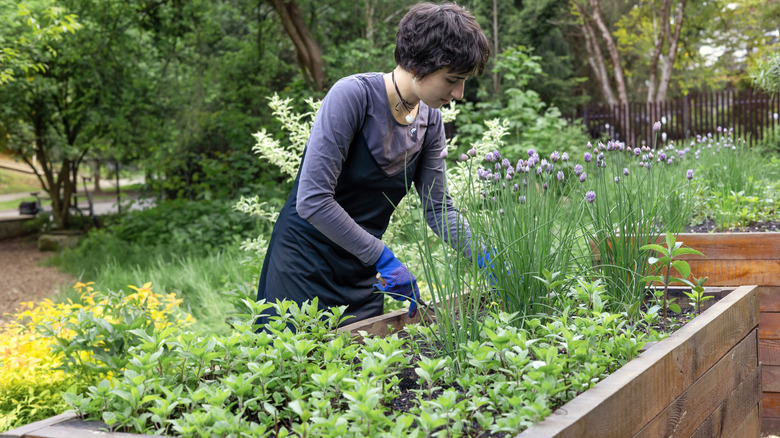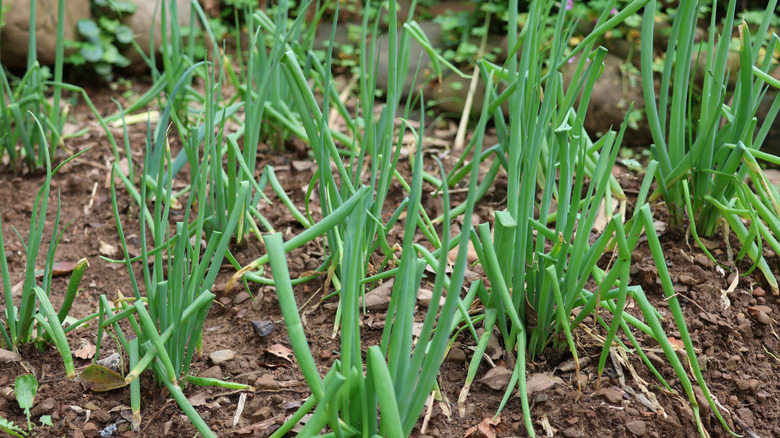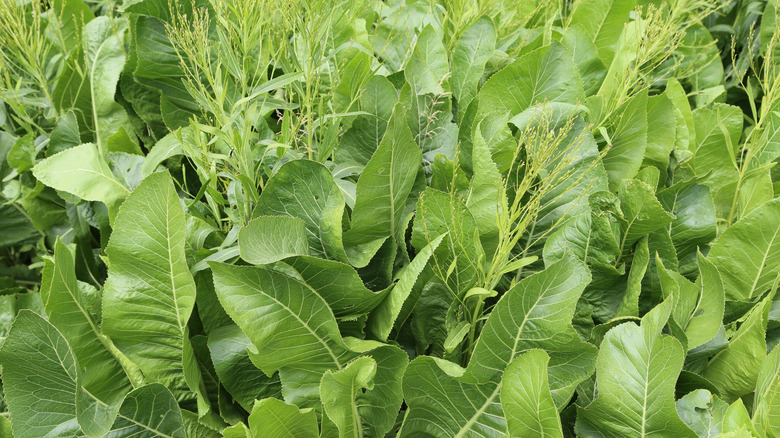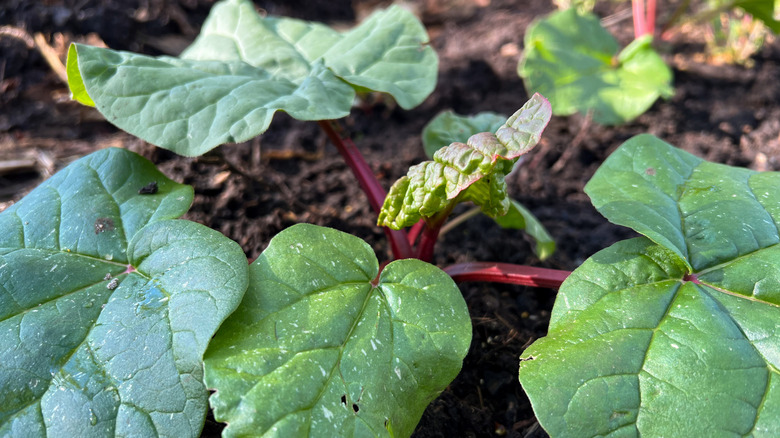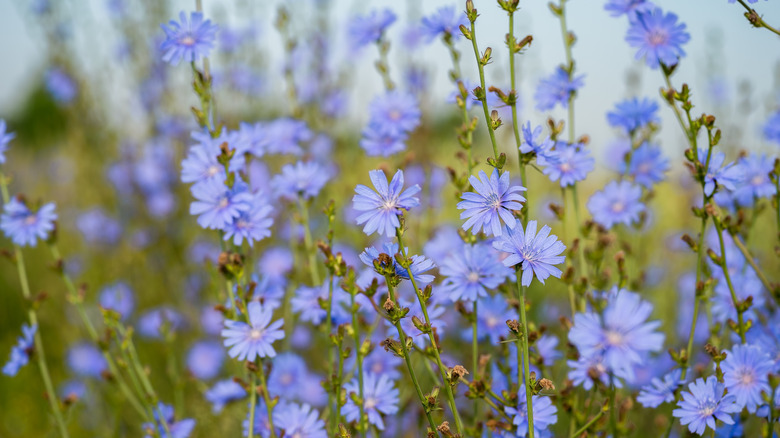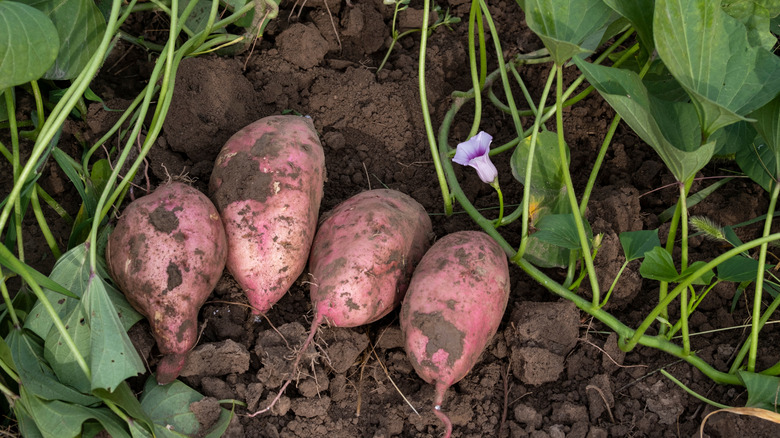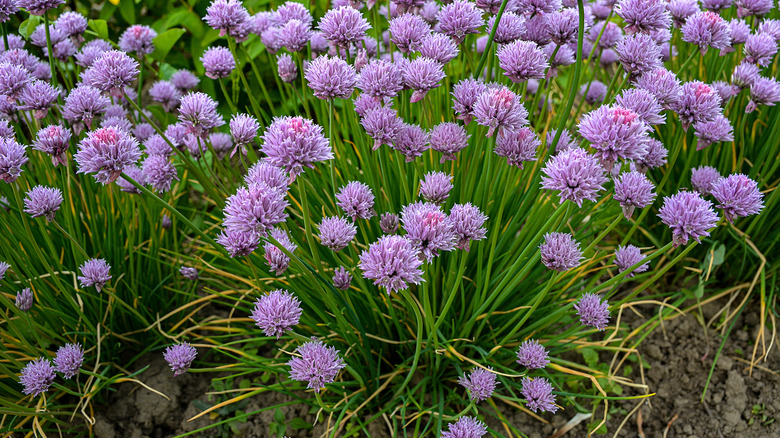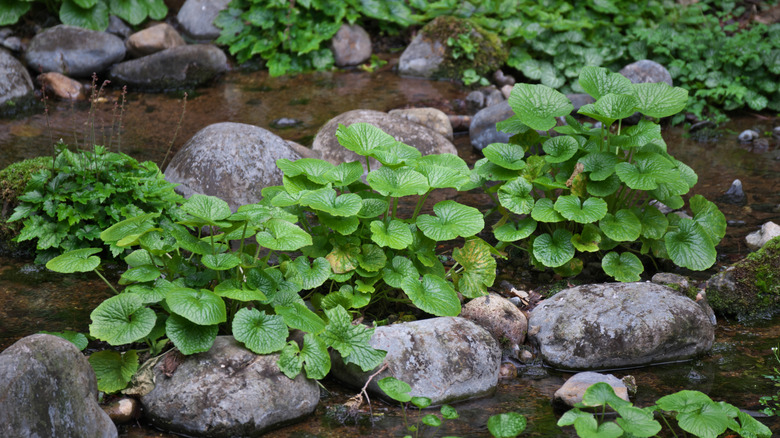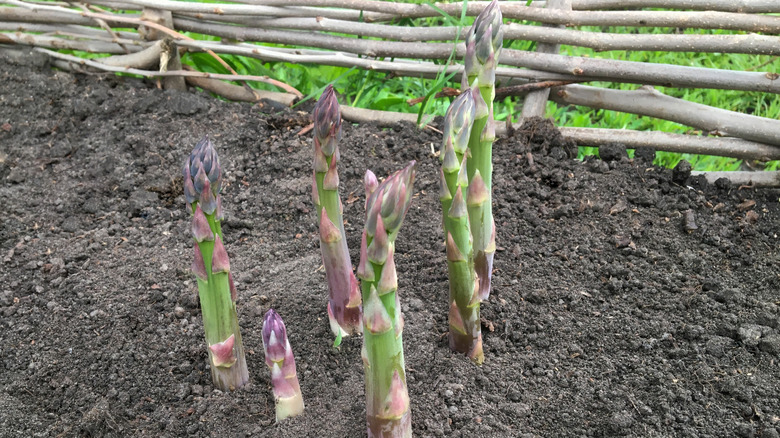9 Perennial Vegetables You Can Plant Once To Enjoy An Endless Bounty
For some vegetable gardeners, the routine of spring and fall plantings and scheduled harvests are a welcome addition to the rhythm of life. For others, it's just one more task that they might forget or push off until it's too late. The latter type of gardener might find themselves longing for a "set it and forget it" style of planting — if you're one of these folks, luckily for you, there are actually certain types of vegetables with which you can do just that.
Perennial planting — particularly as part of a permaculture type of planting system — can have a number of benefits beyond time savings. For example, the ever-present roots of perennials can help to prevent soil erosion and disruption of the soil's delicate microbiome. With careful planning and allowances for time and other considerations, perennial vegetables can be a valuable addition to your backyard garden. Just make sure your selections are things you're certain you'll want to eat a lot of, year after year!
Scallions
Sometimes called bunching onions or green onions, scallions (Allium fistulosum) are a staple of many cuisines and taste great chopped and sprinkled atop multiple dishes. Considered hardy in USDA Zones 6 through 9, scallions tend to like well-drained, loamy soil and consistent moisture, and, like other plants in the onion family, favor full sun. Seeding can begin in spring all the way through early fall, with bunches planted closely and then later separated by about 6 to 8 inches when mature. Divide particularly large mature bunches and replant them to produce all the scallions you could possibly want!
Horseradish
Love or hate it, this spicy perennial member of the cabbage family might just keep coming back whether you want it to or not. Hardy in zones 2 through 9, horseradish (Armoracia rusticana) likes fertile soil high in potassium and can be regrown year after year with little maintenance simply by leaving roots in the soil after harvesting. Make sure that this is a plant you want to commit to, however — unless you've done a thorough job of digging up all the roots, it may be difficult to completely get rid of if you want to repurpose the plot.
Sunchokes
Whatever name you know it by — Jerusalem artichoke, perhaps — sunchokes (Helianthus tuberosus) can provide a feast for the eyes, the mouth, and local birdlife! The tubers can function much like potatoes in the kitchen, and may be a good non-starchy potato substitute for diabetic folks. Its sunflower-like blossoms draw pollinators and seed-eating birds alike, so it's an ideal choice for birdwatchers. Sunchoke is hardy in zones 3 through 9 and benefit from full sun, but can also tolerate partial shade. A self-seeding rhizomatous plant, it can be an aggressive spreader ... so maybe consider growing it in containers.
Rhubarb
A member of the buckwheat family, rhubarb (Rheum rhabarbarum) is best grown in cooler climates and can thrive in zones 3 through 8. In addition to its sweet, tangy stalks, which are most often used in pies and jams, rhubarb's ruffled, large-scale foliage makes it an attractive addition to a full-sun flower garden, as long as it has enough space to spread out. You can grow rhubarb from root divisions spaced 4 feet apart, and divide large root crowns every three or four years. Make sure to discard the inedible leaves before cooking!
Chicory
While you've probably encountered the leaves of chicory (Cichorium intybus) as salad greens, if you've ever visited New Orleans, you may have tried coffee brewed with chicory root and its distinctive nutty flavor. Native to parts of Europe and Asia, and naturalized throughout America in zones 3 through 9, chicory's blue flowers often wave in the breeze along roadways and in pastures — or in your garden. (Make sure it isn't considered invasive in your state first!). Grow chicory in well-draining soil in full sun and keep an eye on its reseeding behavior if you don't want it running wild.
Sweet potatoes
You may have seen it grown as an annual in cooler climates, but the sweetpotato vine (Ipomoea batatas) can actually be grown as a perennial in warm-to-hot climates, ideally in zones 9 through 11. Typically spelled as "sweet potato," this tropical vine is not only desirable for its delicious, highly nutritious tubers, but can also serve as attractive full-sun ground cover. Propagate sweetpotato from tuber or vine cuttings in a glass of water and plant after about six weeks, when the plants are 6 to 8 inches tall. Wait until the plant is mature to harvest.
Chives
What's better than a baked potato with sour cream and chives? A baked potato with chives harvested from your own endless backyard source, of course! This member of the onion family is not only useful as a culinary ingredient, but also produces light purple flowers in spring and summer that bees and other pollinators love. Hardy in zones 3 through 9, chives (Allium schoenoprasum) may also be good companions for your other garden plants, as they can help deter certain pests. To prevent them from taking over your garden via self-seeding, you may want to be diligent about deadheading.
Wasabi
"But wait, we've already covered horseradish," you might say — but wasabi, or Japanese horseradish (Eutrema japonicum), is an entirely separate, aquatic plant. Originally hailing from Japan and Korea, wasabi likes hot, humid summers and cool winters, often found in zones 7 through 10. Cultivating this plant can be a challenge, and it may be difficult to find in your local garden center. But if you happen to have a well-shaded stream or waterfall in your yard, you may just be up to the task. Grate the cleaned rhizomes within 30 minutes of harvesting for the best flavor.
Asparagus
Hardy in zones 2 through 9, asparagus is one of those rare perennial veggies suited to colder climates, as long as its favored conditions — full sun and moist soil — are met. Although when left alone, asparagus plants can grow as tall as 3 to 5 feet, it's the spring shoots emerging from the underground root system that are harvested and eaten. Asparagus can be started from seed (a slower process requiring a year or more to see returns) or propagated from one- or two-year-old crowns. To prepare for winter, prune plants back to 2-inch stubs after the first frost.
